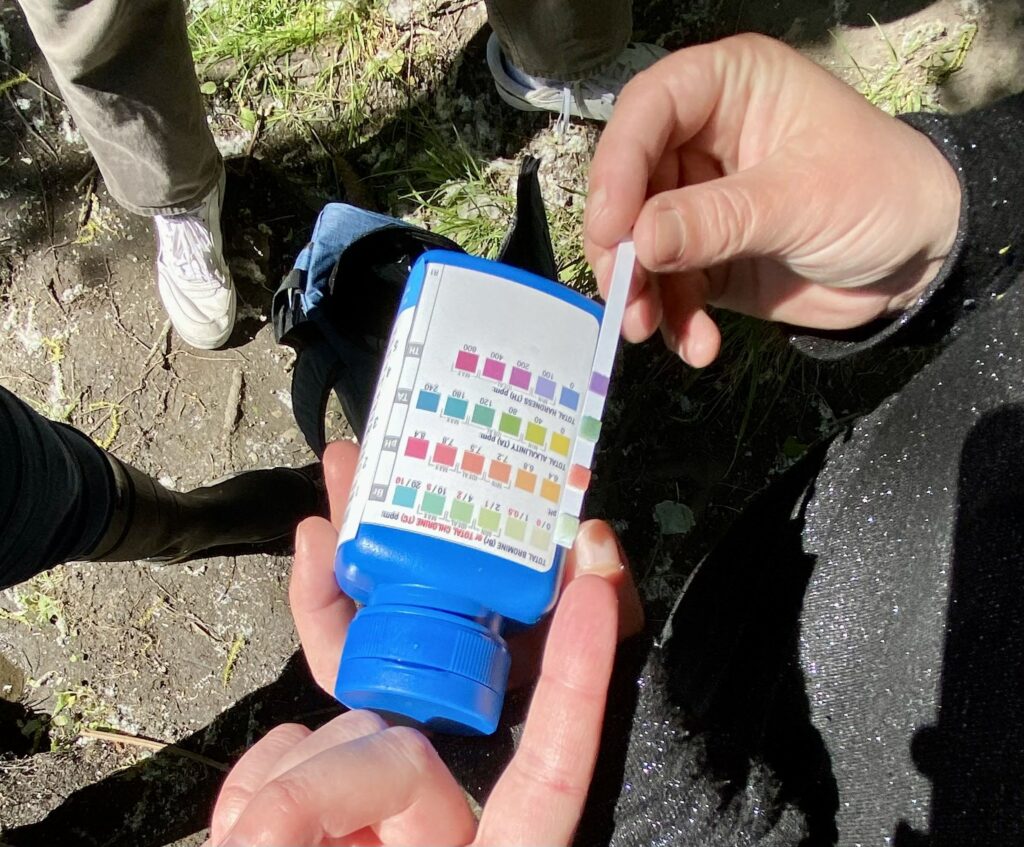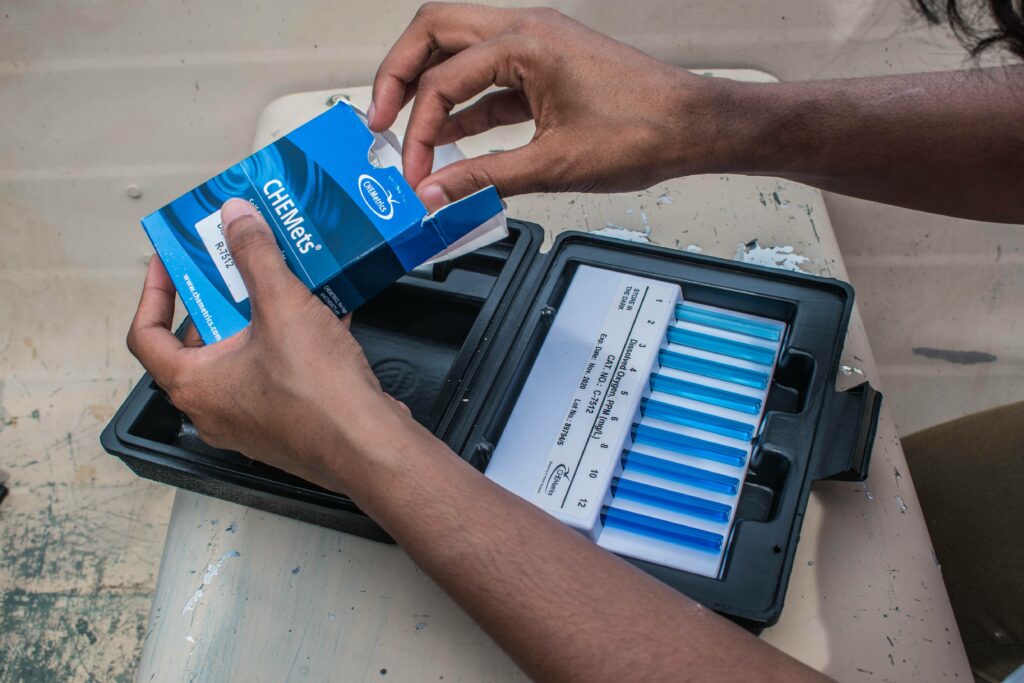Water test parameters
Our testkits can be used to measure parameters like pH, conductivity, dissolved oxygen, and more. It entirely depends on which kind of kit you have!
But what do any of these parameters actually mean, and why are they important for us to measure? We’ve put together a “parameters page” to answer those very questions! Here, you’ll find information about all of the parameters you can measure using our testkits, plus information on a few others that we can’t test for quite yet.



Parameter FAQs
Check out out parameters page for an in depth description and protocol to our testing parameters!
Water Rangers conductivity meters measure the conductivity of freshwater in µS, or microsiemens.
Water will measure different results of conductivity depending on it’s condition, shown below;
| Distilled water | 0.5 – 3 µS |
| Melted snow | 2 – 42 µS |
| Has effects on fish reproduction | over 500 µS |
| Tap water | 50 – 800 µS |
| Potable water | 30 – 1500 µS |
| Freshwater streams | 100 – 1,000 µS |
| Industrial wastewater | 10,000 µS |
| Sea water | 55,000 µS |
For more an introduction, our protocol, and additional information regarding conductivity, we encourage you to visit our conductivity parameter page!
Water Rangers measures dissolved oxygen, or DO2, in milligrams/litre.
Different measurements of DO2 will mean different circumstances for life in a water body, shown below;
- 0-2 mg/L: not enough oxygen to support life
- 2-4 mg/L: only a few fish and aquatic insects can survive
- 4-7 mg/L: good for many aquatic animals, low for cold water fish
- 7-11 mg/L: very good for most stream fish
For more an introduction, our protocol, and additional information regarding dissolved oxygen, we encourage you to visit our dissolved oxygen parameter page!
